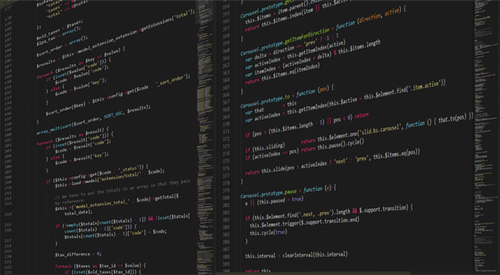There are many concepts of software programming that new developers should understand. Here are some of those:
- Interface: Interface is an essential concept in software programming. It’s a visual representation that communicates directly with users. Simple and accurate interface is important. Interface with poor design and structure could result in impaired user experience. Unused elements and unnecessary complexities must be removed from the interface.
- Naming conventions and templates: Naming conventions are useful as shortcuts in the development process. The whole team knows how to call something. Templates are basic frames or structures that can be modified for all purposes. So, they can also help to speed up development time.
- Layering: A software construction is similar to a pyramid. As the development project moves to the next phase, each component will have cumulative complexity. To keep things simpler, the development project should use modular concepts. When components are reusable with no or minimum modification, productivity will increase.
- Algorithm: Elegant algorithms can be the core of your program’s inner working. If performance is your main priority, you shouldn’t ignore it. However, it doesn’t mean that your algorithm should be complex. Write readable and compact codes, so your algorithm can be simpler and cleaner.
- Hashing: The main goal of hashing is to ensure fast access to your data. If you store data sequentially, the time needed to find an information will increase proportionally, depending on how big the list is. A good hashing method spread data uniformly and data recovery time will be constant. Hash functions may be sophisticated and complex, but the performance benefits will be immense.
- Caching: Today, no modern system could well quickly enough without cache. Without cache, commonly needed information will need to be frequently obtained from database or the web. Developers need to use cache to their full advantage. So, database will not need to be flooded by rapid queries.
- Concurrency: Concurrency is actually about parallelism, which is placed inside the application. Many modern languages have integrated concurrency. As an example, Java language use threads to implement concurrency. Each thread has separate process or sequence of steps, but access a common source of data.
- Cloud computing: Cloud computing is a large-scale computing that’s done remotely through the web. Cloud computing is affordable and massively parallel. Cloud computing was originally based on parallel computing, which could get many things done in a shorter period of time.
- Security: In a highly interconnected digital era, security is critical. The risk of data theft and hacking is quite real. It means that security factors need to be included in any software development process. Authorization, authentications and encrypted information are just a few of many security mechanisms that we can use.
- Relational database: With relational database, information is recorded in tables. These tables correlate with one another. Users use SQL or other query languages to get information that they want. Speed of information retrieval can be maximized, while data redundancy or duplication can be minimized.


















